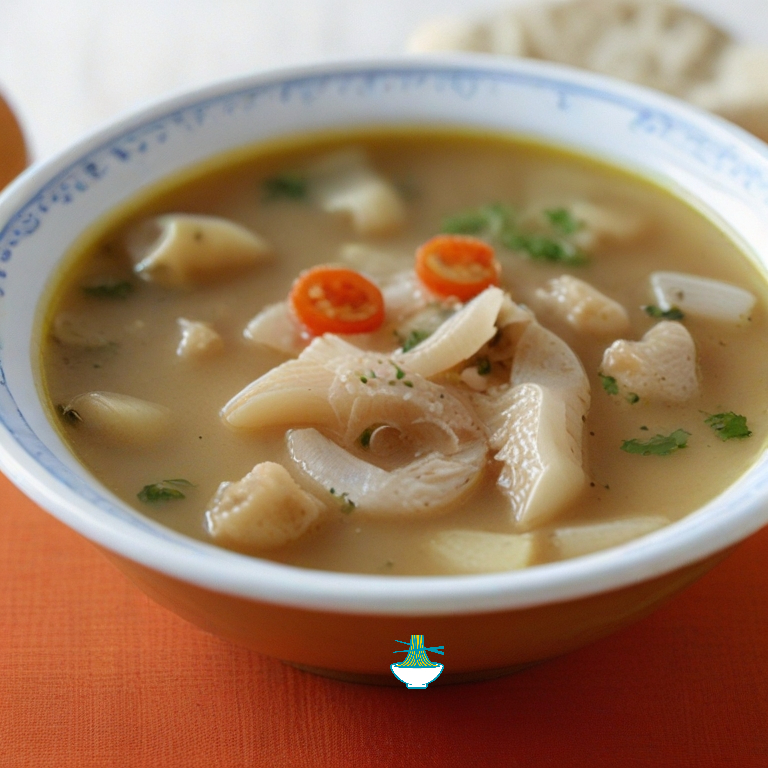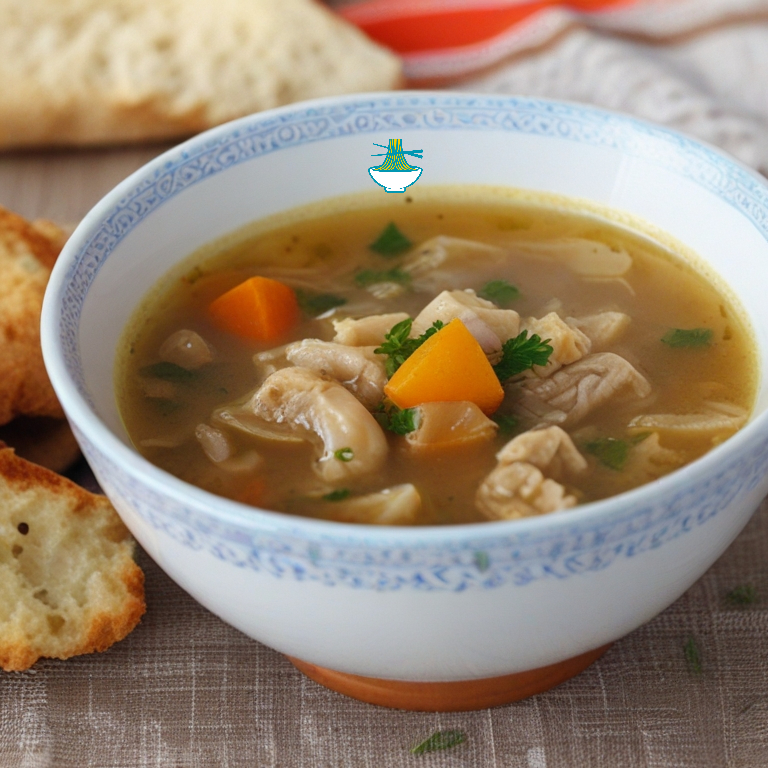Indulge in the rich flavors of Georgian cuisine with our traditional Georgia Khashi recipe. This hearty tripe soup, a beloved staple in Georgian households, is a celebration of robust flavors and comforting warmth. Made with tender tripe simmered to perfection in a fragrant broth infused with aromatic spices and herbs, Georgia Khashi offers a taste of culinary heritage like no other. Whether enjoyed as a soul-soothing meal on a chilly evening or as a centerpiece of festive gatherings, this dish promises to transport you to the vibrant streets of Tbilisi with every spoonful. Embark on a culinary journey to Georgia and savor the essence of its gastronomic culture with our authentic Georgia Khashi recipe.
Ingredients:
- 500g beef tripe, cleaned and cut into small pieces
- 1 large onion, finely chopped
- 3 cloves garlic, minced
- 2 medium carrots, diced
- 2 medium potatoes, diced
- 2 tomatoes, chopped
- 1 tablespoon tomato paste
- 1 teaspoon paprika
- 1 teaspoon ground coriander
- 1 teaspoon ground fenugreek
- 1 teaspoon ground marigold (optional, but adds a distinct flavor)
- 1 bay leaf
- Salt and pepper to taste
- Fresh parsley or cilantro, chopped (for garnish)
- 1 tablespoon vegetable oil
- Water

Instructions:
1- Rinse the beef tripe thoroughly under cold water and then cut it into small pieces. Place the tripe in a large pot and cover it with water. Bring the water to a boil over high heat, then reduce the heat to low and let it simmer for about 10 minutes. Drain the tripe and set it aside.
2- In the same pot, heat the vegetable oil over medium heat. Add the chopped onion and minced garlic, and sauté until they are soft and translucent.
3- Add the diced carrots and potatoes to the pot, and cook for another 5 minutes, stirring occasionally.
4- Stir in the chopped tomatoes and tomato paste, and cook for another 2-3 minutes.
5- Return the cooked tripe to the pot, and add enough water to cover all the ingredients. Bring the soup to a boil, then reduce the heat to low and let it simmer for about 1-1.5 hours, or until the tripe is tender.
6- Once the tripe is tender, add the paprika, ground coriander, ground fenugreek, ground marigold (if using), bay leaf, salt, and pepper to the soup. Stir well to combine, and let the soup simmer for another 10-15 minutes to allow the flavors to meld together.
7- Taste the soup and adjust the seasoning if necessary.
8- Serve the Georgia Khashi hot, garnished with chopped fresh parsley or cilantro.
Enjoy your delicious Georgian tripe soup!
nutritional values :
Beef Tripe (500g):
- Calories: 450 kcal
- Protein: 45g
- Fat: 30g
- Carbohydrates: 0g
- Fiber: 0g
benefits : Beef tripe is a good source of protein, essential for muscle repair and growth. It also contains iron, zinc, and vitamin B12, which are important for overall health and energy
Onion (1 large):
- Calories: 60 kcal
- Protein: 2g
- Fat: 0g
- Carbohydrates: 14g
- Fiber: 2g
benefits : Onions are rich in antioxidants such as quercetin, which may help reduce inflammation and lower the risk of chronic diseases. They also contain fiber, vitamins C and B6, and folate, which support immune function and heart health.
Garlic (3 cloves):
- Calories: 13 kcal
- Protein: 0.6g
- Fat: 0.1g
- Carbohydrates: 3g
- Fiber: 0.2g
benefits : Garlic is known for its antibacterial and antiviral properties. It contains sulfur compounds like allicin, which may help boost the immune system and reduce the risk of certain cancers. Garlic is also a good source of manganese, vitamin B6, and vitamin C.
Carrots (2 medium):
- Calories: 50 kcal
- Protein: 1g
- Fat: 0g
- Carbohydrates: 12g
- Fiber: 4g
benefits : Carrots are loaded with beta-carotene, which is converted into vitamin A in the body and is essential for healthy vision. They are also rich in fiber, vitamins C and K, and potassium, which support digestion, immune function, and heart health.
Potatoes (2 medium):
- Calories: 220 kcal
- Protein: 5g
- Fat: 0.2g
- Carbohydrates: 50g
- Fiber: 6g
benefits : Potatoes provide a good source of carbohydrates, which are the body's main source of energy. They also contain vitamin C, potassium, and fiber, which support immune function, muscle function, and digestive health.
Tomatoes (2 medium):
- Calories: 40 kcal
- Protein: 2g
- Fat: 0.4g
- Carbohydrates: 9g
- Fiber: 3g
benefits : Tomatoes are rich in lycopene, a powerful antioxidant that may help protect against certain cancers and promote heart health. They are also a good source of vitamins A and C, potassium, and folate.
Tomato Paste (1 tablespoon):
- Calories: 15 kcal
- Protein: 0.7g
- Fat: 0.1g
- Carbohydrates: 3.5g
- Fiber: 0.7g
benefits : Tomato paste is concentrated and provides a rich source of lycopene and other antioxidants found in tomatoes. It also contains vitamins A and C, which support immune function and skin health.
Vegetable Oil (1 tablespoon):
- Calories: 120 kcal
- Protein: 0g
- Fat: 14g
- Carbohydrates: 0g
- Fiber: 0g
benefits : Vegetable oil provides healthy fats, such as monounsaturated and polyunsaturated fats, which are important for heart health. It also contains vitamin E, an antioxidant that helps protect cells from damage caused by free radicals.
Please note that these values are approximate and can vary based on factors such as the specific ingredients used and cooking methods. Additionally, the nutritional values for spices and garnishes are typically negligible and not included here.


Comments